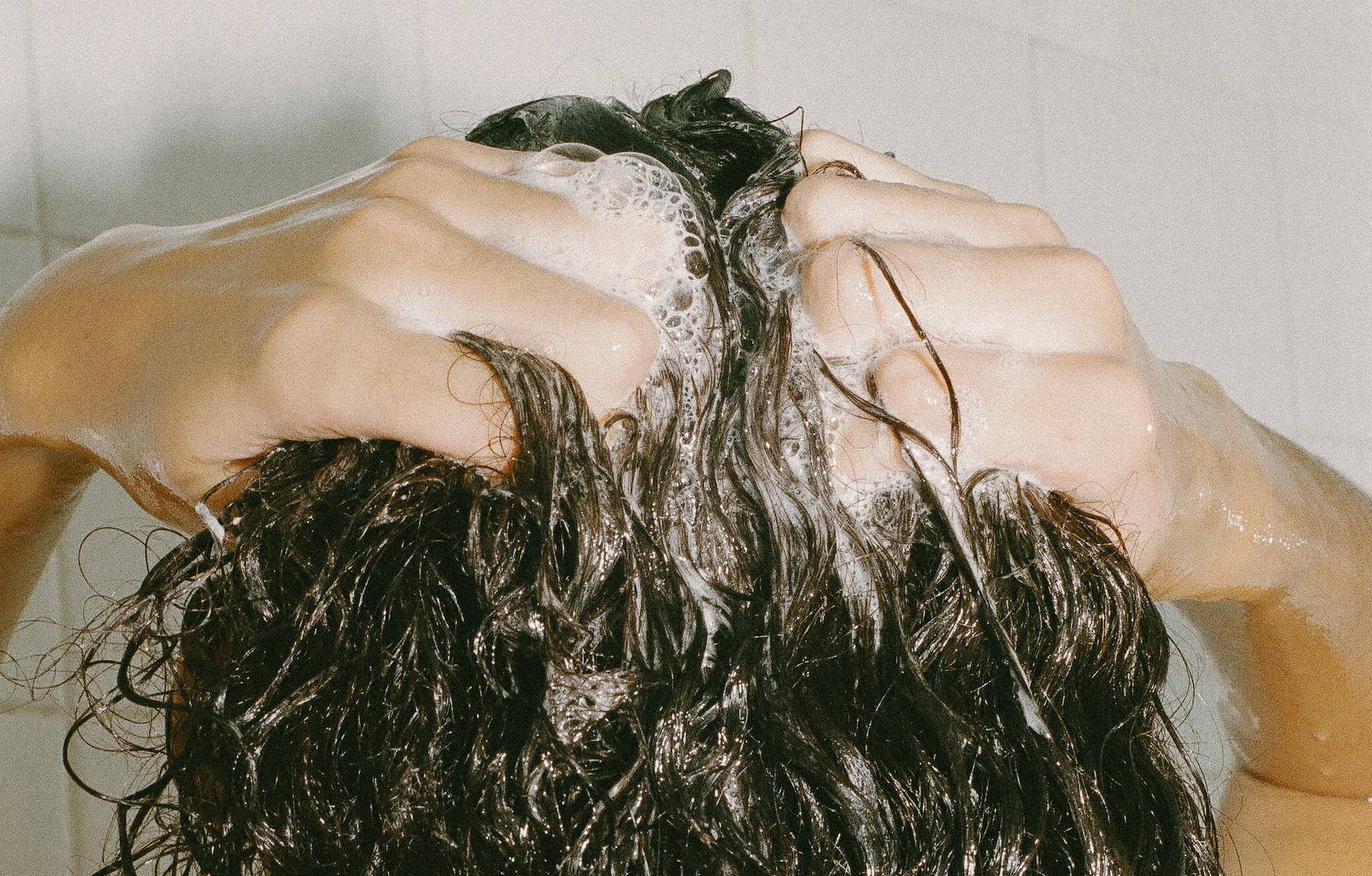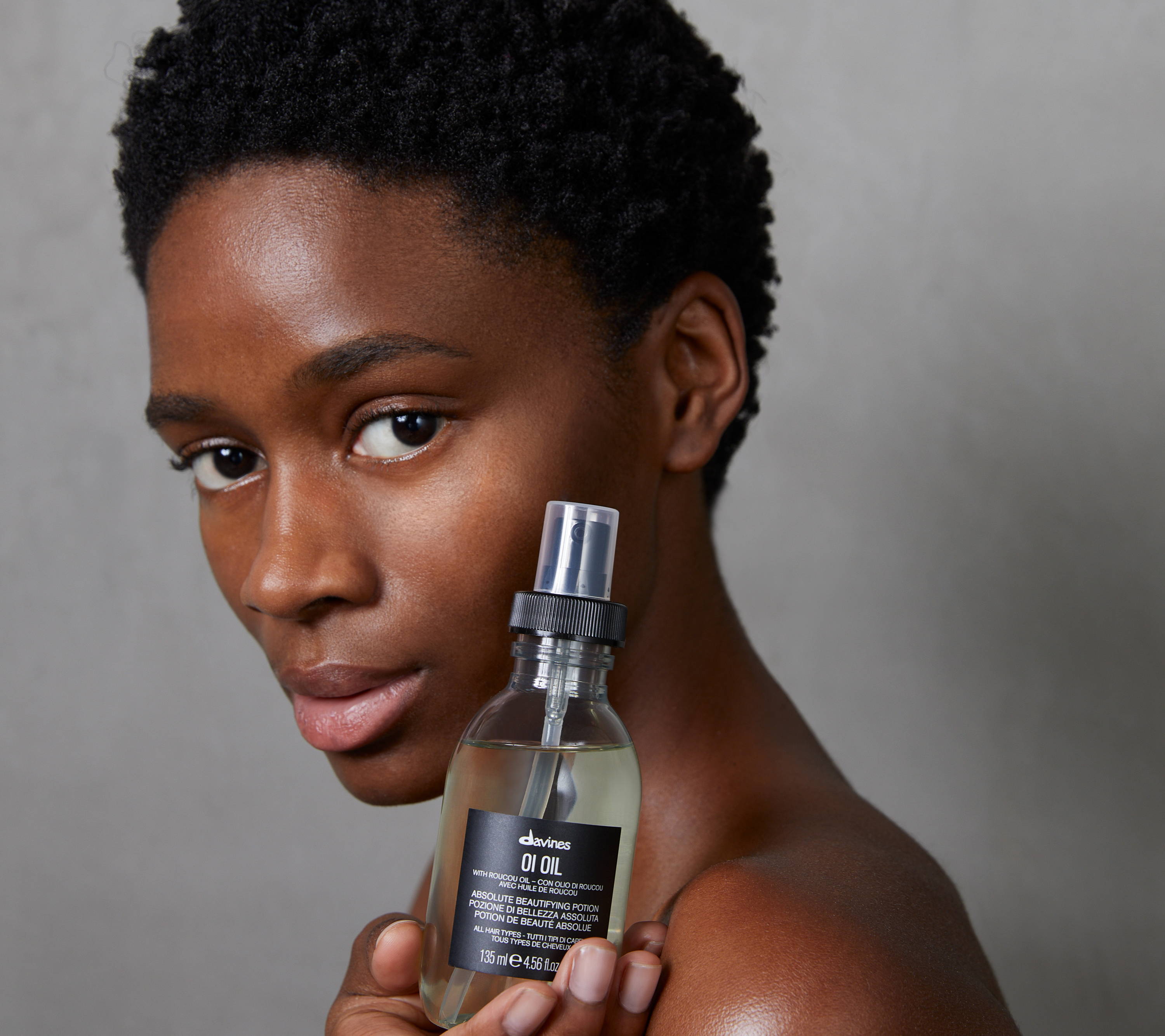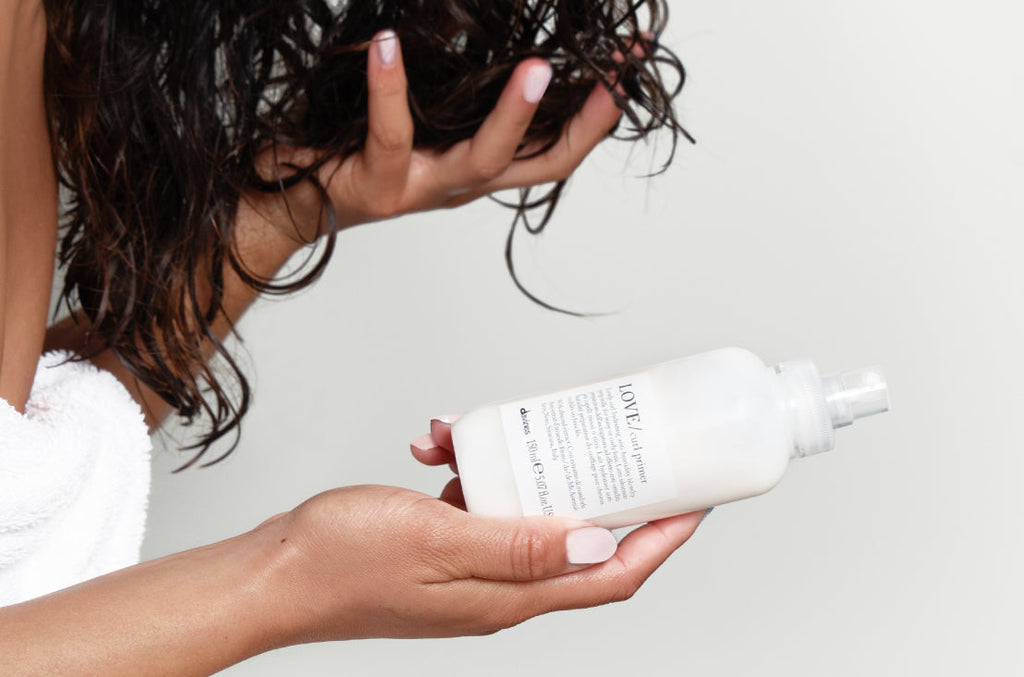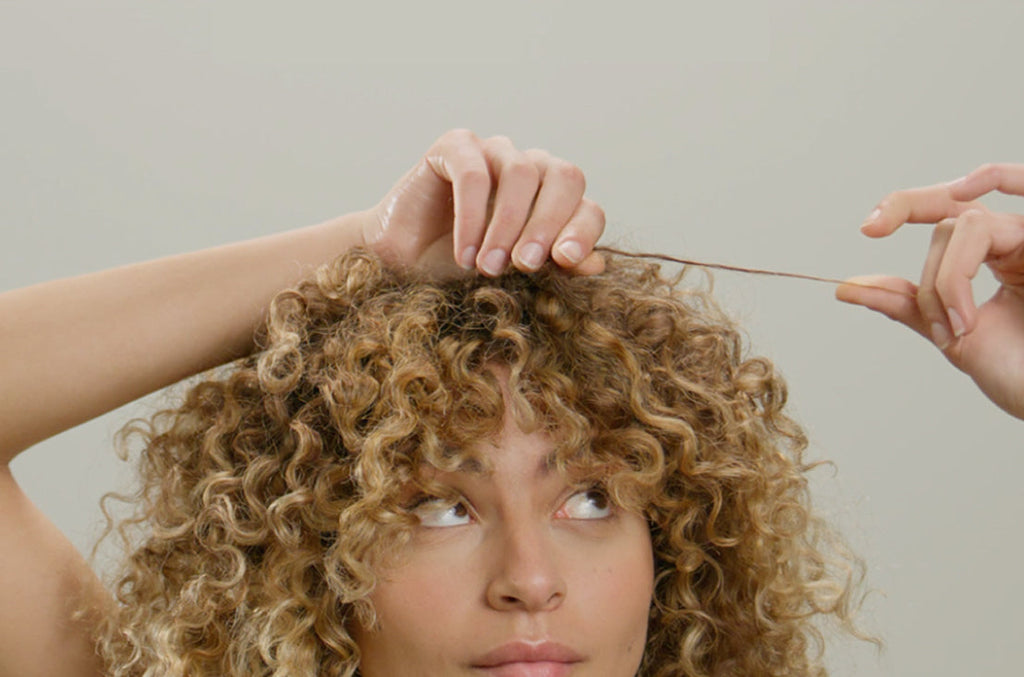Pay with Klarna
Free Carbon Neutral Shipping On Orders $75+, Plus Free Samples!
Pay with Klarna
Free Carbon Neutral Shipping On Orders $75+, Plus Free Samples!
If it feels like your strands are never getting enough moisture no matter how much conditioning you do, you likely have highly porous hair. Hair porosity refers to how well your hair is able to absorb and hold on to moisture. High porosity hair absorbs — and loses — moisture relatively easily. And while this means it can take in a lot of nutrients, it’s also hyper-sensitive to elements that can lead to damage. If you have high porosity hair, understanding how to care for and maintain it is essential to keep it healthy, hydrated, and looking its best. We’re breaking it all down for you ahead with the ultimate guide to unlocking the secrets of high porosity hair.
So what is high porosity hair? Hair porosity falls into three categories: high, medium and low. Low porosity means it’s difficult for moisture to penetrate and also difficult for moisture to escape. Low porosity hair can also be resistant to coloring. Medium porosity can accept moisture and release moisture easily. The hair cuticles are not tightly woven together and in general absorb products and moisture well, making it easier to care for. High porosity hair, unlike low porosity hair, has a compromised hair cuticle that allows moisture to easily pass through. Because of this inability to retain moisture, the result is frizz, dryness, and a lack of shine. High porosity is usually caused by hair damage due to excessive heat, chemical treatments or over-styling. Genetics can also play a factor, in fact people with hair type 3C curly and 3B curly, are especially prone to highly-porous hair strands.
Figuring out which type of hair porosity you have will make styling your strands and keeping them healthy a lot easier. So how do you know your hair’s porosity? There are certain giveaways that you have high porosity hair. A major tell is that it looks dull. While a closed cuticle creates a flat surface that reflects light, a damaged strand of hair can look like a frayed rope up close. If you have highly porous hair, you can expect lots of frizz, dullness and tangles. Your hair will also likely be prone to breakage and damage, and may look and feel dry. The best indicator of high-porosity hair is that your hair is noticeably more fragile than it used to be. Here’s a breakdown of the signs of high porosity hair:

You can take steps to prevent your hair from becoming highly porous, but it's impossible to return strands to a lower-porosity state once the damage has been done. High porosity hair, with its raised cuticle structure, easily absorbs moisture but struggles to retain it. So especially if you have color-treated or permed hair, managing high porosity hair requires a specialized approach to ensure that strands remain healthy, hydrated, and looking their best. Follow these tips for managing high porosity hair:
Regular deep conditioning treatments are a must when it comes to high porosity hair. Look for protein-rich conditioners that help repair and strengthen the hair cuticles. These treatments provide much-needed nourishment and help seal the gaps in the cuticles, reducing porosity and preventing moisture loss.
It’s also extremely important to minimize the use of heat styling tools, such as flat irons and curling wands. High porosity hair is already prone to damage, and excessive heat can exacerbate the issue. If heat styling is necessary, always use a heat protectant spray to minimize the damage.
Hydration is key for high porosity hair. Use leave-in conditioners and hair oils to lock in moisture and prevent water from escaping the cuticles too quickly. Regular moisturizing helps maintain the hair's elasticity and prevents dryness and frizz.
Consider protective hairstyles that reduce exposure to environmental factors and minimize friction on the hair. Braids, twists, buns, and other protective styles help retain moisture and minimize damage, promoting overall hair health.
You should also reduce the use of harsh chemical treatments, such as bleaching and excessively coloring your hair. These processes can further damage the hair cuticles and increase porosity. If you need to color your hair, opt for gentle, ammonia-free dyes and seek professional assistance.

High porosity hair is more prone to split ends and breakage. Especially if you chemically treat your strands, regular trims help remove damaged ends, promoting healthy hair growth and preventing further damage.
Brushing your hair thoroughly will stimulate your scalp, which can encourage hair growth, so brushing your thin hair is important. But remember to be gentle. If you tug and pull your hair, or hear ripping sounds as you brush, you’re applying too much pressure. This will cause breakage, leading to thinning hair and hair loss. The same is true if you brush right out of the shower, as your hair fibers are most fragile when wet.
The best treatments for high porosity hair are essential to repair and strengthen the hair cuticles, reduce porosity, and retain moisture. High porosity hair, with its raised cuticle structure, easily absorbs and loses moisture, making it more susceptible to damage and frizz. Here’s our expert-approved list of effective treatments to address the specific needs of high porosity hair:
An apple cider vinegar (ACV) rinse can work wonders for high porosity hair. ACV helps to balance the hair's pH level and seal the cuticles, reducing porosity and promoting shine. Mix 2 to 4 tablespoons of apple cider vinegar with 16 ounces of water. After shampooing and conditioning, pour the mixture over your hair evenly, working into your scalp. Let it sit for a couple of minutes and rinse.
Protein treatments are crucial for high porosity hair, as they help repair and strengthen the hair shaft, minimizing gaps in the cuticles. Look for protein-rich treatments or products containing ingredients like keratin, collagen, or hydrolyzed wheat protein.
Hot oil treatments provide intense hydration and nourishment to high porosity hair, helping to improve its overall health and manageability. Use oils like coconut, olive, or argan oil. Warm the oil slightly and apply it to your hair, focusing on the ends.
Co-washing involves using a cleansing conditioner instead of traditional shampoo to retain more moisture in the hair. Co-washing can be especially beneficial for high porosity hair, as it avoids stripping the hair of its natural oils.
Rice water is rich in vitamins and minerals that can strengthen and nourish high porosity hair. After rinsing your hair with shampoo, use rice water as a final rinse. Leave it on for a few minutes before rinsing it with water.
High porosity hair strands have a raised cuticle structure, allowing moisture and external substances to penetrate easily. This hair type drinks up hydration just as easily as it can lose it and is usually caused by hair damage due to excessive heat, chemical treatments, or over-styling- though it can be genetic. It’s worth noting that very few people have low-porosity hair. As soon as your hair grows out and is exposed to the elements, you will have some type of rise in porosity. The average human being has medium porosity hair, with the ends being more porous than the roots, since they've been exposed to damaging elements for longer. Use only the best high porosity hair products to care for your high porosity hair, like the ones from Davines.
by Jaclyn LaBadia, featured contributor
Subscribe
Sign up to hear about product recommendations, styling how-to's, tips & tricks, and more!
Plus, Free Shipping on your first order!
Join our newsletter to enjoy free shipping on your first order.
By submitting this form, you agree to receive the latest news, updates, promotions, and other marketing information from Davines North America, Inc. by email.



Leave a comment
Comments will be approved before showing up.